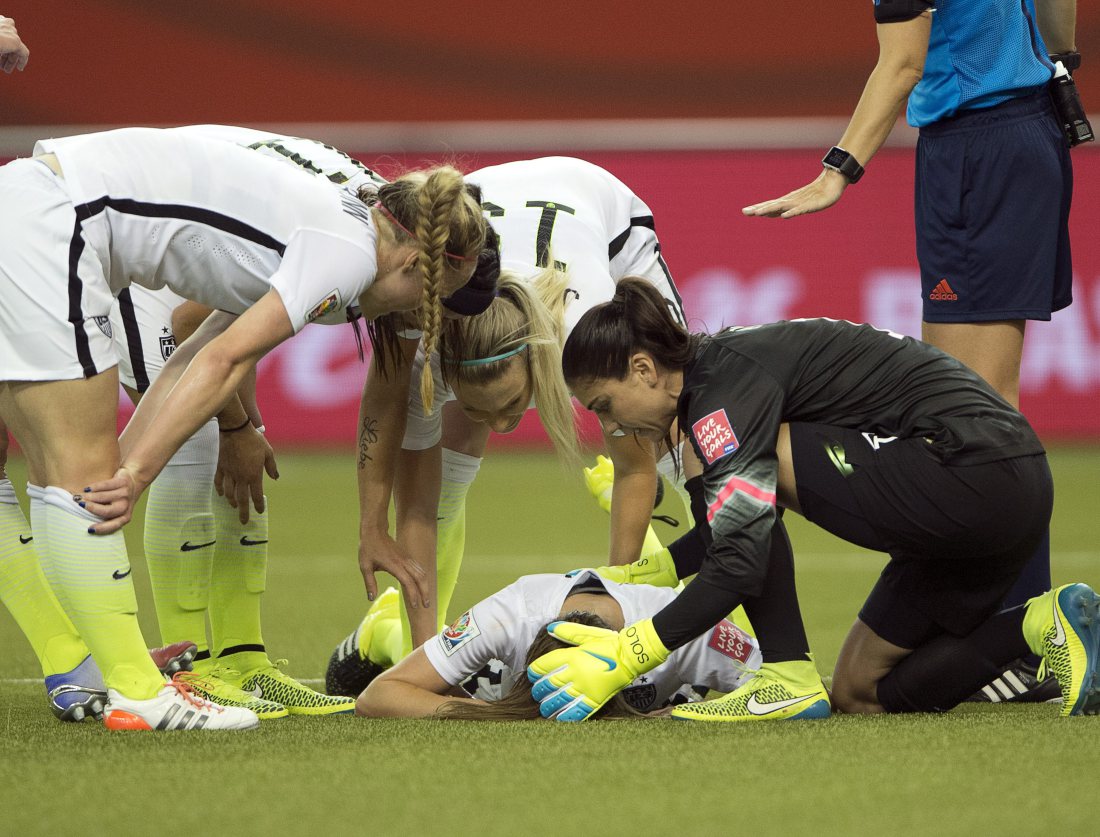
Female athletes, in particular soccer players, suffer concussions at a “significantly higher” rate than their male counterparts, according to a study released this month by the American Academy of Orthopaedic Surgeons.
In matched sports, girls were 12.1 percent more likely to sustain a concussion than boys, according to the report, which tracked concussions in a sport relative to total number of injuries from 2005 to 2015 using the High School Reporting Information Online injury surveillance system. In basketball, for example, concussions accounted for only 8.8 percent of boys’ injuries, but 25.6 percent of girls’ injuries.
“The neck muscles of girls just aren’t as developed as boys are,” Wellington Hsu, one of the study’s authors and a professor of orthopedic surgery at Northwestern University, told the Washington Post. “So if girls experience an impact, it makes sense they might be affected by it more than boys if they don’t have the muscles to cushion that impact.”
Researchers from Northwestern and Wake Forest University studied data from American football, soccer, basketball, wrestling and baseball participation for boys; soccer, basketball, volleyball and softball for girls. The results showed a striking gender-based difference in the incidence of concussion. American football, a sport most typically associated with brain injury but also with a high number of total injuries due to it being a collision sport, was fourth on the concussion list as a percentage of total injuries, behind girls’ soccer, girls’ volleyball and girls’ basketball.
The study’s authors attribute that increased risk to a lack of protective equipment available for female athletes and an increased emphasis on physical play. In soccer specifically, the authors cite a potential increase in headers, and wrote: “It remains unclear why boys’ soccer players do not appear to have the same risk as girls.”
This story first appeared in the blog, The Sport Intern. The editor is Karl-Heinz Huba of Lorsch, Germany. He can be reached at ISMG@aol.com. The article is reprinted here with permission of Huba.